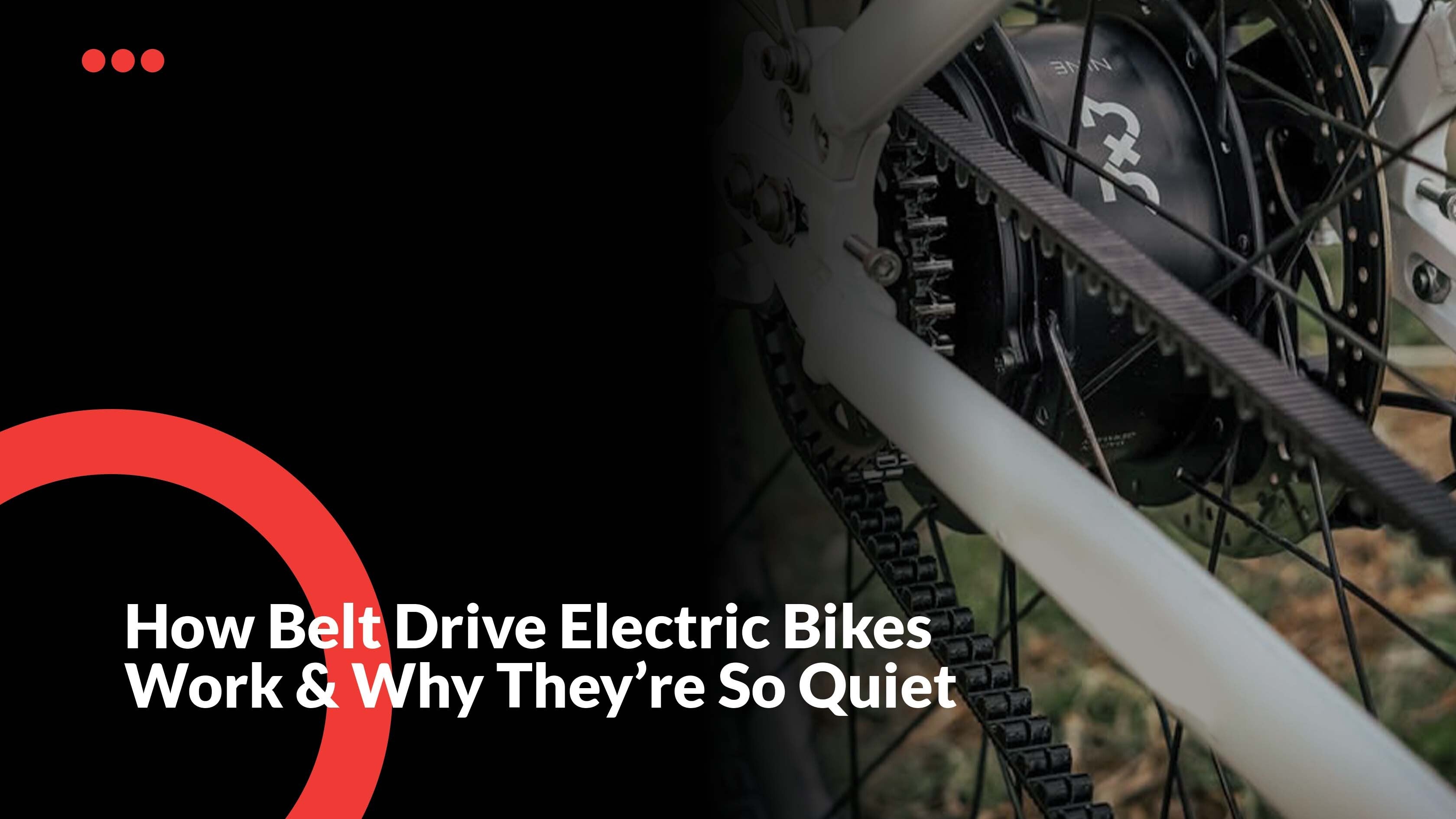How Belt Drive Electric Bikes Work – And Why They’re So Quiet

Ever heard of CVT transmission in cars?
It’s that smooth gearbox where you don’t feel the gear shifts, because there aren’t any. CVT stands for Continuously Variable Transmission, and instead of jumping between fixed gears, it smoothly glides through a continuous range. That means the engine always works at its most efficient RPM, saving fuel and delivering buttery acceleration.
Here’s the wild bit: CVTs were banned in Formula 1. Why? Because they were too efficient. One team tried them out in the ’90s, and the car accelerated so cleanly out of corners it was practically unfair. For reference, F1 cars hit 0–100 km/h in about 2.6 seconds, and the CVT setup was threatening to do it even faster. It gave instant torque, max efficiency, and made gear changes a thing of the past. Race officials were like, “Nice try—but nope.”
So what does all this have to do with e-bikes?
Belt Drive vs Chain Drive
When choosing between a belt drive electric bike and a traditional chain-driven one, it’s more than just about looks or trends—it’s about performance, durability, and how much time you want to spend on maintenance.
1. Noise
-
Belt drive: Near-silent. No metal clanking, no squeaking.
-
Chain drive: Can get noisy, especially if dry or dirty.
2. Maintenance
-
Belt transmission bike: No lubrication, no rust, no stretching. Just ride.
-
Chain drive: Needs regular oiling, cleaning, and tension checks.
3. Lifespan
-
Belt drive: Typically lasts 2–4x longer than a chain. We’re talking 15,000–20,000 km.
-
Chain drive: Usually needs replacement after 3,000–5,000 km.
4. Efficiency
-
Belt drive electric bike: Less friction = better energy transfer from motor to wheel. Great for battery range.
-
Chain drive: Slightly more energy loss due to friction and link movement.
5. Weather Resistance
-
Belt: Handles rain, mud, and dust like a champ—no corrosion.
-
Chain: Exposed metal can rust and degrade faster in bad weather.
6. Gear Compatibility
-
Belt: Only works with internally geared hubs or single-speed setups.
-
Chain: Compatible with a wider range of external derailleur systems.
Advantages of Belt Drive Electric Bike.
A belt transmission bike works much like a CVT—it’s all about smoothness, efficiency, and low fuss. No oily chains. No clattering gears. Just sleek power delivery and silent rides.
Here’s why switching to a belt drive electric bike is a game-changer:
-
So Quiet, It’s Almost Suspicious
With no metal-on-metal contact, the belt drive electric bike makes zero fuss. No rattles, no clicks—just your tires rolling and the breeze. -
Boosts Your Motor’s Mojo
The belt creates less drag, meaning your motor doesn’t have to work as hard. More of the battery’s energy goes straight into powering your ride. That equals better range and smoother acceleration. -
Set It and Forget It
Chains need cleaning, oiling, and regular adjusting. A belt transmission bike? Not so much. These belts can last over 20,000 km, don’t rust, and don’t need lube. It’s like having a drivetrain on cruise control.
Disadvantages of Belt Drive Electric Bikes
As good as a belt drive electric bike sounds, it’s not all smooth sailing for every type of rider. There are a few things you’ll want to consider before making the switch:
-
Limited Gear Options
Belt drives don’t work with derailleur systems. You're limited to internally geared hubs or single speeds, which might not suit steep hills or varied terrain. -
Higher Upfront & Repair Costs
The system itself is pricier than a chain setup, and if something breaks, repairs can set you back a few hundred bucks. -
Harder to Repair on the Go
If a chain snaps, you can patch it and keep going. A broken belt? It’s game over—you’ll need a full replacement. -
Frame Compatibility Issues
A belt transmission bike needs a special frame with a split in the rear triangle to install the belt. It also needs to be rigid enough to keep the belt tensioned—most full-suspension frames don’t qualify. -
Fewer Spare Parts in Remote Areas
Riding off-grid or in a developing country? Finding a replacement belt or compatible part might be tough. -
Fixed Belt Lengths
Belts come in set sizes, so you can’t fine-tune your setup like you can with a chain. This limits your options for tyre size, rim width, and gear ratio changes. -
Efficiency Drops at Low Power
At low pedal input, belt drives can lose a bit of efficiency and put more stress on the rear hub and bottom bracket bearings over time.
Final Thoughts: Belt vs Chain – Which One’s for You?
Both chain-drive and belt-drive electric bike systems have perks and flaws. Chain drives are tried-and-tested, easy to service, and offer flexible gearing. On the other hand, they’re noisy, need constant maintenance, and can get messy fast.
Belt drive electric bikes, meanwhile, are the quieter, cleaner, and more modern alternative. There’s no metal-on-metal contact, greasy chains, or oil-stained pant legs. Plus, they bring something chains can’t match: shock-absorbing smoothness. That means fewer vibrations and softer transitions when riding over bumps, curbs, or uneven roads. It’s part of what makes the belt drive electric road bike feel more refined and premium.
They may not be perfect for every rider or every terrain, but if you want a low-maintenance, whisper-quiet ride that just feels effortless, a belt transmission bike is hard to beat.
The bottom line? Choose what fits your riding style, but if you're all about comfort, quiet, and hassle-free cruising, belt drive is the way forward.









Leave a comment